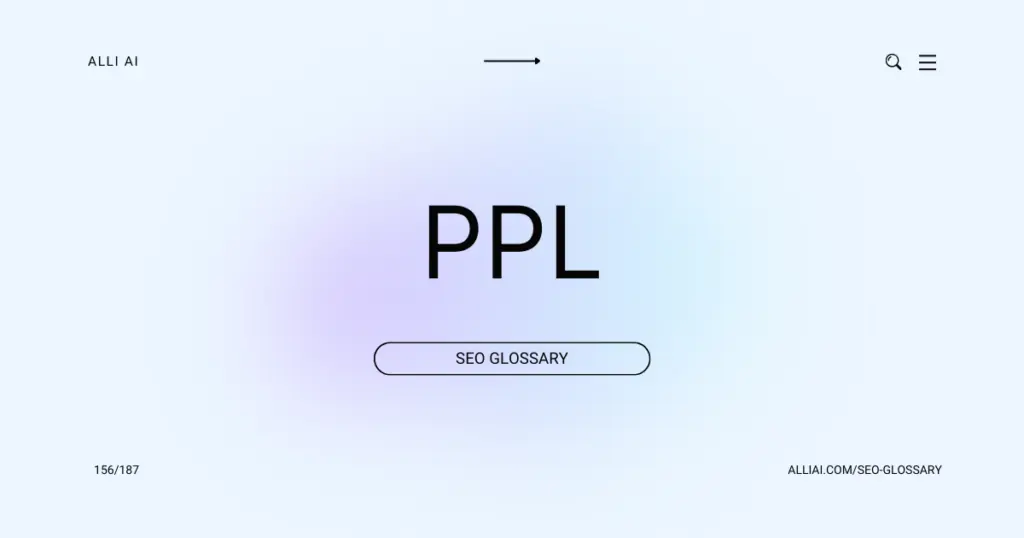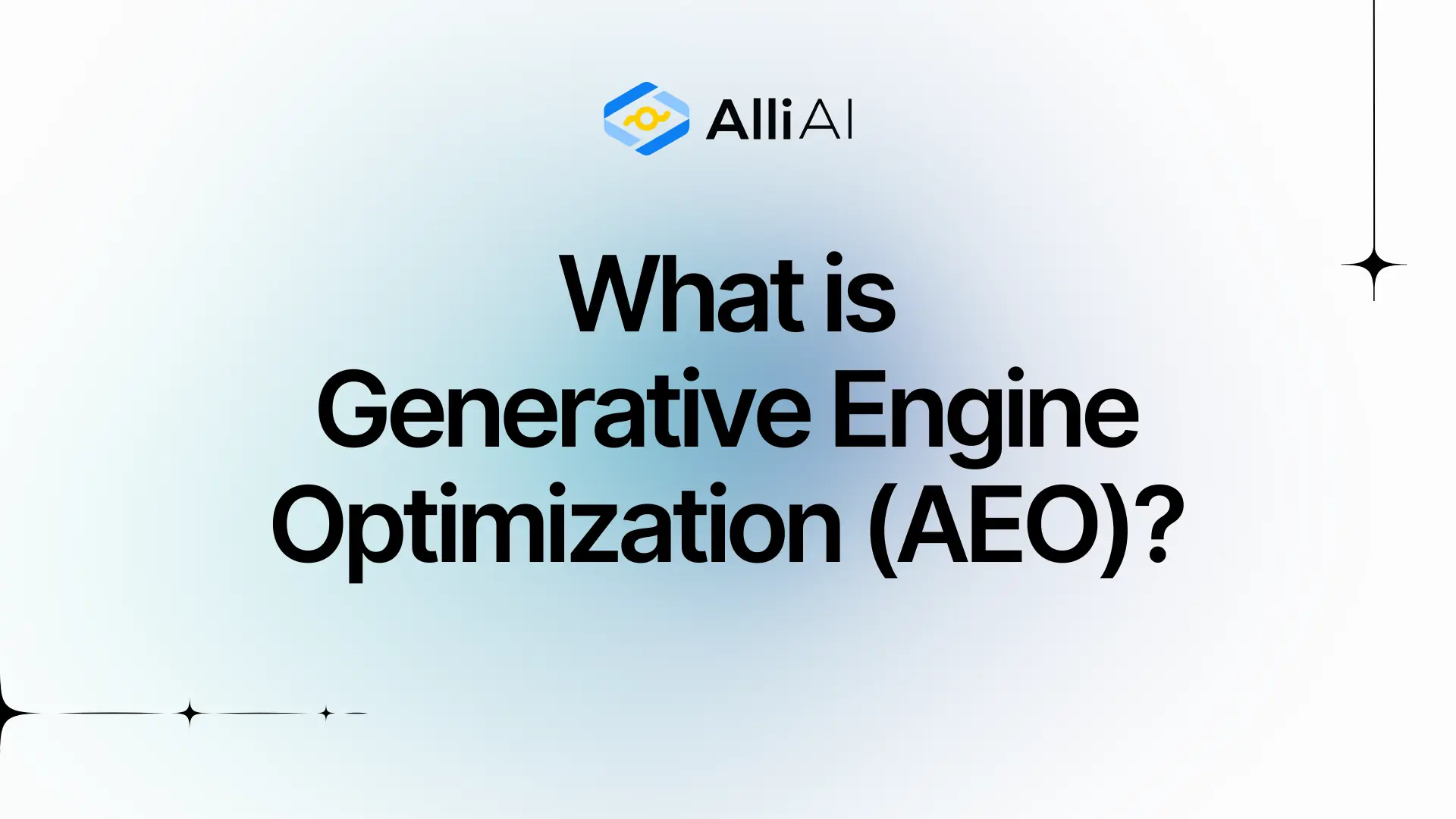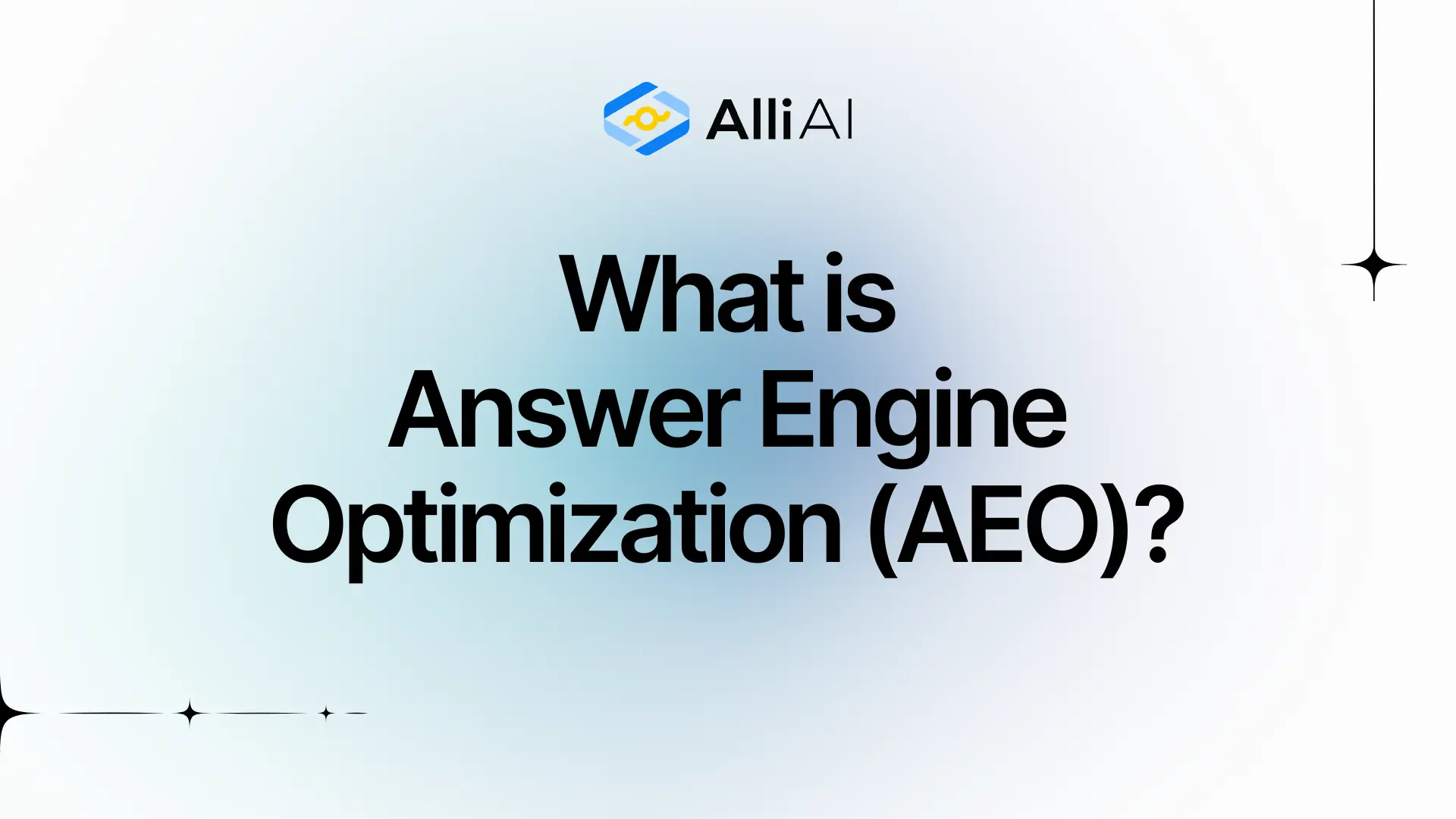What Does Pay-Per-Lead (PPL) Mean?
Pay-Per-Lead (PPL) is a marketing model where a business pays a fee for each lead or potential customer generated through a specific advertising effort. This means the company only pays when it receives contact information or interest from a potential customer, rather than just for ad views or clicks.
Where Does Pay-Per-Lead (PPL) Fit Into The Broader SEO Landscape?
Pay-Per-Lead (PPL) primarily fits into the conversion aspect of the SEO landscape. While SEO generally focuses on organically attracting visitors to a website and boosting its visibility on search engines, PPL is a specific form of lead generation where businesses pay only for leads generated as a direct result of their SEO efforts. PPL emphasizes the quality of traffic and its direct correlation with revenue generation, which aligns with the ultimate goal of SEO to not just attract traffic, but to convert this traffic into actionable leads that benefit the business financially. In practice, effective SEO strategies enhance the performance of a PPL campaign by ensuring the website attracts targeted traffic likely to convert into qualified leads.
Real Life Analogies or Metaphors to Explain Pay-Per-Lead (PPL)
Imagine a fishing tournament where you only pay for each fish that bites the bait, not for every cast you make. In Pay-Per-Lead marketing, businesses only pay for the ‘bites’—actual leads—much like paying only for successful catches, not merely for the effort of fishing.
Pay-Per-Lead marketing is like a fruit tree in a large orchard where you only pay for the fruit you pick and take home. You don’t pay for the right to enter the orchard or the opportunity to look at the trees; you only pay if you actually leave with something valuable.
Think of Pay-Per-Lead as a taxi ride where you only pay if the taxi takes you exactly where you want to go. You don’t pay for the time spent in the cab if it doesn’t get you to your destination. Just like this, in PPL, a business only pays when the lead generation campaign takes it to its desired outcome, which is acquiring a potential customer’s details.
How the Pay-Per-Lead (PPL) Functions or is Implemented?
1. Lead Generation:
– A business identifies or creates a target audience likely to be interested in their product or service.
– Various marketing techniques are employed to solicit interest, such as content marketing, email campaigns, social media advertising, and SEO.
2. Lead Capture:
– Potential leads are directed to a landing page that collects contact information or other relevant data through a form.
– This process is facilitated by offering something of value like a free trial, eBook, or a webinar to incentivize data submission.
3. Lead Verification and Qualification:
– Submitted lead information undergoes verification to ensure accuracy and legitimacy. This can involve software tools for scrubbing fake or duplicate data.
– Leads are then qualified based on predetermined criteria such as lead’s interest level, demographic details, and likelihood to convert.
4. Lead Distribution:
– Qualified leads are distributed to the appropriate client or sales team. Distribution can be automatic or manual, and is often influenced by the specifics of the lead and matching it to the best suited client.
5. Billing Model:
– The lead generator charges their clients a set fee for each qualified lead provided.
– Payment structures might vary, but commonly, a fixed price is set per lead with possible variations based on the lead’s quality or the client’s bespoke demands.
6. Tracking and Reporting:
– Both the lead generator and client employ tracking mechanisms to monitor the status and efficacy of each lead.
– Regular reports assess the conversion rate and overall success of leads, guiding future adjustments in strategies or pricing.
Impact Pay-Per-Lead (PPL) has on SEO
Pay-Per-Lead (PPL) itself does not directly impact a website’s SEO performance or search engine rankings as it is a financial model and SEO is influenced by website content, architecture, and external factors like backlinks and user engagement. However, PPL can indirectly affect user experience, possibly influencing SEO through behavioral metrics. If a website is aggressively optimized for lead generation, potentially at the expense of content quality or user navigation, it could deter user engagement, increase bounce rates, and reduce the time spent on the site, all of which can negatively affect SEO rankings. Conversely, if PPL strategies are aligned well with quality content that satisfies user intent, it could enhance user engagement and contribute positively to SEO.
SEO Best Practices For Pay-Per-Lead (PPL)
1. Identify Target Keywords: Research and identify the keywords that your potential leads are searching for related to your services. Use tools like Google Keyword Planner, SEMrush, or Ahrefs to find relevant keywords with high search volume and buyer intent.
2. Optimize Website Content: Incorporate the identified keywords naturally into your website content, including titles, headings, meta descriptions, and body text. Ensure the content is informative, engaging, and addresses the needs of your potential leads.
3. Create High-Quality Landing Pages: Develop dedicated landing pages for each service or product you offer. Ensure these pages are optimized for conversions with a clear call-to-action (CTA), minimal distractions, persuasive copy, and fast loading times.
4. Use Lead Capture Forms: Embed lead capture forms strategically across your website, especially on landing pages. Make the forms simple and straightforward, requesting only essential information to increase submission rates.
5. Implement Local SEO Tactics: If your business is location-based, optimize for local SEO. This includes creating a Google My Business profile, getting listed in local directories, and using local keywords in your SEO efforts.
6. Utilize Pay-Per-Click (PPC) Advertising: Complement your organic efforts with PPC campaigns. Target your keywords with Google Ads or Bing Ads to drive targeted traffic to your landing pages.
7. Track and Analyze Performance: Use tools like Google Analytics to track the source and behavior of your visitors. Regularly review which keywords and landing pages are performing best in terms of generating leads.
8. Optimize for Mobile: Ensure that your website and landing pages are mobile-friendly, as a significant number of searches are done on mobile devices. Mobile responsiveness affects both user experience and search engine rankings.
9. Improve Website Speed: Enhance the loading speed of your website and landing pages. Faster sites provide better user experiences and are favored by search engines.
10. Test and Optimize: Use A/B testing to experiment with different elements of your landing pages, including CTAs, images, form designs, and copy to find what converts best. Regularly update your strategies based on test results and analytics data.
11. Build Quality Backlinks: Increase the authority of your website by acquiring backlinks from reputable sites in your industry. This improves your site’s trustworthiness and search engine rankings, driving more organic traffic.
12. Follow Up with Leads Promptly: Establish a system for quickly responding to inquiries or leads generated. Fast response times can significantly improve the conversion rates from lead to customer.
Common Mistakes To Avoid
1. Low-Quality Leads: Some PPL providers might prioritize quantity over quality of leads, resulting in leads that do not convert. Carefully vet providers and set clear definitions and qualifications for leads.
2. High Costs: Without proper monitoring, PPL can become expensive if leads do not convert into sales. Implement tracking mechanisms to assess the ROI from each lead and adjust strategies accordingly.
3. Provider Dependence: Relying heavily on PPL providers can make your business vulnerable if their performance drops. Diversify your lead generation strategies to include SEO, PPC, and other marketing channels.
4. Lack of Control: In a PPL model, control over the lead generation process can be limited. Establish clear agreements with providers regarding lead generation tactics to maintain brand integrity.
5. Fraudulent Leads: There is a risk of receiving fake or irrelevant leads. Use lead validation tools and services to verify the authenticity and relevance of each lead.
6. Brand Misalignment: If the leads are generated through methods that do not align with your brand values, it can harm your reputation. Ensure that the provider’s lead generation methods are compatible with your brand.
7. Contractual Issues: PPL agreements can be complex and might have unfavourable terms. Read contracts thoroughly and consider legal consultation to ensure terms are beneficial and fair.
8. Data Privacy Compliance: Ensuring compliance with data protection regulations (like GDPR) is crucial. Confirm that your PPL provider adheres to legal standards concerning data acquisition and use.
9. Lead Saturation: Too many clients accessing the same pool of leads can decrease the effectiveness of a campaign. Check how exclusive the leads are and prefer providers who offer exclusive leads.
10. Integration Issues: Leads need to be integrated into your existing CRM systems without hassle. Ensure compatibility and seamless integration capabilities to maximize lead management efficiency.






